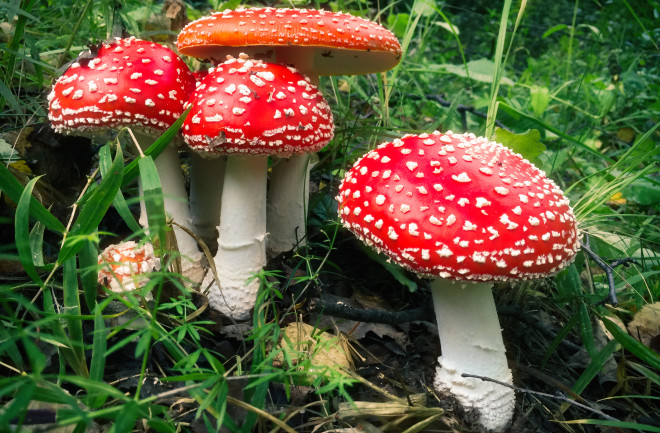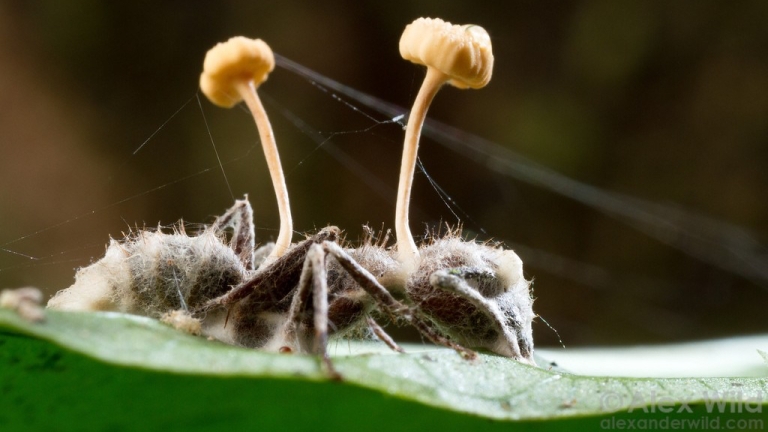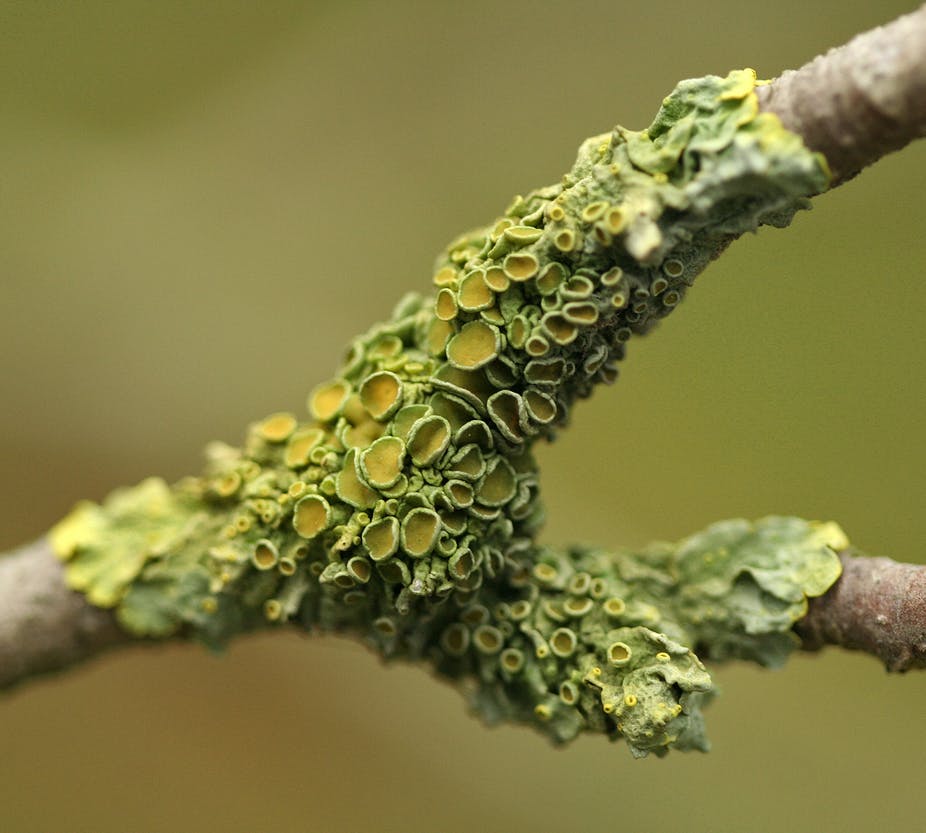Fungi – Nutrition and Symbiosis Study Guide
Introduction:
There are around 145,000 species of fungi known to humans to date, but according to estimations, the actual number is much higher and goes over 3 million species of fungi!
Yeast, molds, mildews, mushrooms, etc., are all examples of fungi. Fungi have medicinal usage, commercial usage, used as a food product, and several other uses, making them an important organism to humans. These microscopic organisms are not considered fully under the plant kingdom, nor do they completely make it to the animal kingdom.
Nutrition in Fungi
There are three different ways fungi obtain their nutrition.
1. SAPROTROPH FUNGI
- Saprotroph fungi are those which obtain their nutrition from dead decayed organic(plants & animals) matter.
- They absorb soluble organic compounds.
- They act as recyclers in biochemical cycles.
- Saprotrophic fungi decompose dead animals and plant tissues by releasing enzymes from hyphal tips.
- Such abilities make them primary decomposers in the forests.
- Example- Oyster mushrooms, shiitake.
2. PARASITIC FUNGI
- A parasitic fungus is one that obtains its nutrients from the host.
- These fungi have enzymes that break down the tissues of the host to feed them.
- Parasitic fungi are also the cause of many diseases, which they give to the host while feeding on them.
3. SYMBIOTIC NUTRITION
Some fungus get photosynthetic sugars from the plants and in exchange, the plant is benefitted from the fungus as it helps them to absorb water and mineral nutrients by putting out the mycelia. This process is mutualism in symbiosis.
Symbiosis in Fungi
Symbiosis is basically a close association between two or more different species. Many fungi show a symbiotic relationship and establish both parasitic and mutualistic associations.
1. PARASITIC SYMBIOSIS
- In parasitism, one partner is benefited while the other is harmed. The benefiting organism is the parasite, and the other is called the host. Parasitic fungi live in or on other organisms and get their nutrients by feeding on them.
Fungi have special structures to penetrate their hosts.
- They produce enzymes that break down the host’s tissues.
- Parasitic fungi often cause illness in their hosts and may also kill them.
- They are a major cause of disease in agricultural plants.
- Fungi also parasitize animals and insects.
- Fungi even parasitize humans
- Example – an athlete’s foot is a parasitic symbiosis where a human is the host of a parasitic fungus. Many other fungal infections in humans too are of parasitic nature.
2. MUTUALISTIC SYMBIOSIS
In mutualism, both partners get mutual benefit. Many fungal mutualisms are because of the ability of the fungus to decompose organic substrates that are not accessible to the host.
Two very common examples of mutualistic symbiosis are:
A. LICHENS
- A lichen is a symbiotic relationship between a fungus and a photosynthetic organism (cyanobacteria or green algae).
- The fungus grows around the bacterial or algal cells.
- The fungus obtains carbohydrates from the algae which are photosynthetic and provide the green color to the lichen thallus.
- The algae benefit from the water and nutrients absorbed by the fungus.
- Thus, the lichen mutualistic relationship is established.
B. MYCORRHIZAE
- Mycorrhizae are examples of a symbiotic relationship between fungi and the plant root.
- Around 70-80% of all plants have mycorrhizae.
- The fungus colonizes the host plant either growing directly into the root cells or around the root cells.
- In this mutualistic association, the fungus gets constant and direct glucose from the plants, and in exchange, the plant is benefitted from the fungus as it helps it to absorb water and mineral nutrients by putting out the mycelia.
- Mycelia increase the surface area of the root system.
Conclusion:
- Fungi are heterotrophic.
- Fungi are the primary decomposers in the forest.
- Many fungi are involved in a symbiotic relationship.
- Some fungi are parasitic and some get benefitted from mutualism.
FAQs:
1. What is fungal symbiosis?
Fungal symbiosis refers to the symbiotic relationship of the fungi. Majorly there are two types of symbiotic relationships exhibited by the fungi. First is parasitic, in which fungus acts as a parasite and second is mutualistic (lichens & mycorrhiza), in which both are mutually benefitted.
2. What is the symbiotic relationship between fungi and humans?
The symbiotic relationship between fungi and humans is mainly parasitic where the fungi act as a parasite. Many fungal infections in humans are an example of this relationship. The athlete’s foot is yet again a very common infection in which human is the host of a parasitic fungus.
3. What are the two symbiotic relationships with fungi?
The two symbiotic relationships with fungi are:
- Parasitic Symbiosis- In this symbiotic relationship, the fungus acts as a parasite and takes advantage of the host by feeding on it, hence causing harm to its host.
- Mutualistic Symbiosis- Mutualistic Symbiosis is generally considered as a relationship that is beneficial to both the fungus and its host. Two main mutualistic symbiotic relationships in fungi are seen in Lichens and Mycorrhizae.
4. How do lichens show symbiosis?
Lichens show mutualistic symbiosis. The fungus grows around the bacterial or algal cells. The fungus obtains carbohydrates from the algae, which are photosynthetic and provide the green color to the lichen thallus. The algae benefit from the water and nutrients absorbed by the fungus.
5. What is the role of algae and fungal partners in lichen?
Lichens are formed by the symbiotic relationship of a fungus with algae. The algal partner prepares food for fungi and itself and the fungal partner helps in the absorption of nutrients from the substrate.
6. What mode of nutrition is shown by lichens?
The mode of nutrition in Lichens is- Symbiotic nutrition. Lichens are formed by the symbiotic relationship of a fungus with algae. The algae prepare food for fungi and themselves and fungi help in the absorption of nutrients from the substrate.
We hope you enjoyed studying this lesson and learned something cool about Fungi- Nutrition and Symbiosis! Join our Discord community to get any questions you may have answered and to engage with other students just like you! Don’t forget to download our App to experience our fun, VR classrooms – we promise, it makes studying much more fun!😎
Sources:
- Fungi Nutrition. https://flexbooks.ck12.org/cbook/ck-12-biology-flexbook-2.0/section/8.13/primary/lesson/how-fungi-eat-bio/ Accessed 10 Dec, 2021.
- Fungi Symbiosis. https://flexbooks.ck12.org/cbook/ck-12-biology-flexbook-2.0/section/8.14/primary/lesson/symbiotic-relationships-of-fungi-bio/ Accessed 10 Dec, 2021.



